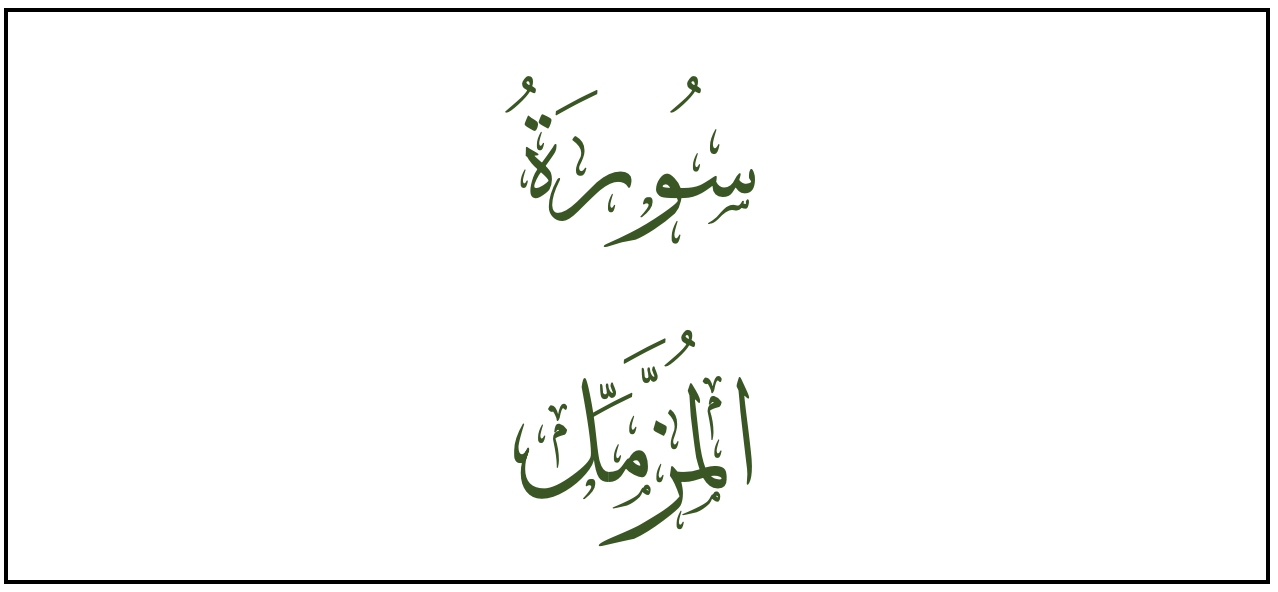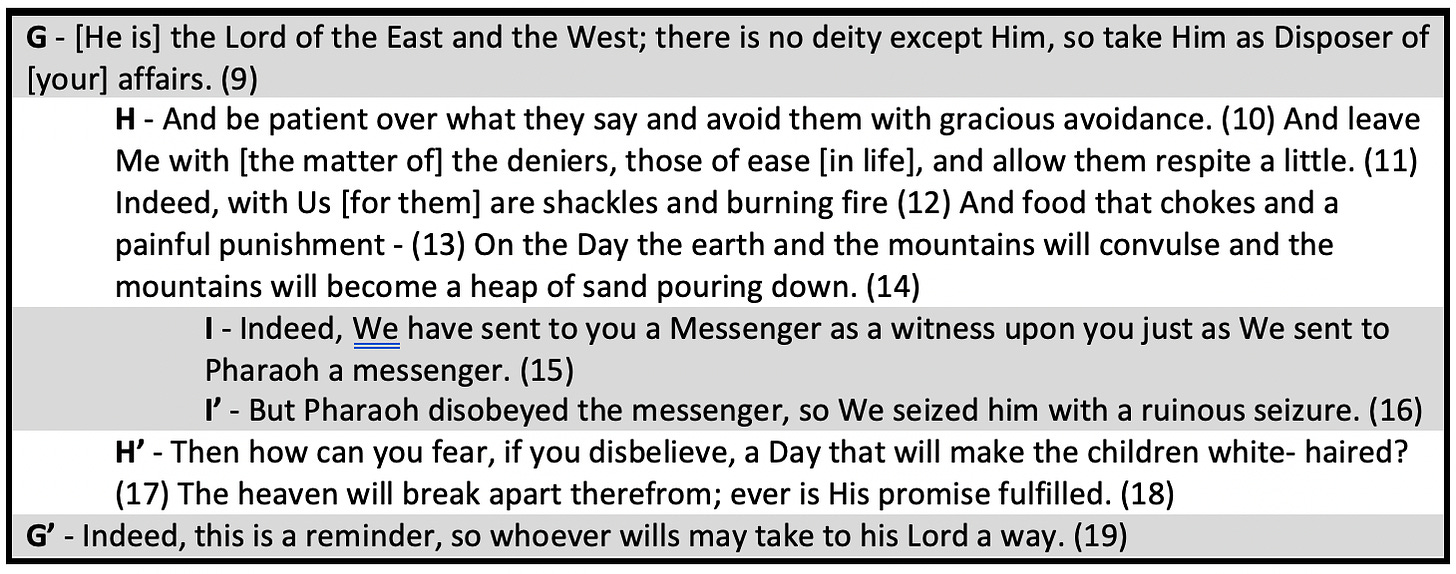Sūrat al-Muzzammil (The Wrapped Up One), is one of the earliest revealed suwar in the Quran. Scholars generally agree that the first 19 āyāt were revealed in Makkah, but the final āyah has a couple differing opinions concerning it. Some say it was a later Makkan revelation, while others – based on the subject matter – are of the opinion that it was revealed in Madinah.1 It is a relatively short sūrah most known for its injunction to pray in the middle of the night (known to Muslims as qiyām al-layl). Viewed overall, it appears to be organized in a ring structure.
Each of these sections can further be broken down into their own individual ring structures.2
[A] - Dedicate yourself to prayer at night
Connections
[C]/[C’] - The sūrah begins with Allah ﷻ commanding the Messenger ﷺ to pray in the middle of the night when he can be alone, without distraction. The section ends with Allah ﷻ telling the Messenger ﷺ to devote himself to Allah ﷻ, wholeheartedly. What better time than at night when all obligations to people are on hold?
[D]/[D’] - This section begins with the command to recite Quran and ends with the command to “remember the name of your Lord". What better way to remember Allah ﷻ than with the Quran?
[E]/[E’] - Allah ﷻ says He sent down a “weighty revelation” upon the Messenger ﷺ. The information and news the Messenger ﷺ learns through this revelation is what keeps him busy all day long.
[F] - This entire ring centers on the idea that night is the best time for prayer and focusing on Allah ﷻ.
[B] - Trust yourself to Allah ﷻ or face the consequences
Connections
[G]/[G’] - The section begins by imploring us to entrust ourselves to the one true God, and ends by reminding us that anyone may go to Him if they so will.
[H]/[H’] - Both [H] and [H’] provide stern words against the enemies of Islam. Allah ﷻ mentions the threats of Hell (“shackles", “burning fire”, “food that chokes”, a day so terrifying it makes children’s hair go white, etc.), but says that these warnings will not affect those who disbelieve.
[I]/[I’] – [I] begins by mentioning the archetype disbeliever, Pharaoh, and how he also received a messenger from Allah ﷻ. Unfortunately, Pharaoh rejected the messenger which led to his destruction. This acts as a subtle warning to those who also had a messenger, Muhammad ﷺ, living in their midst as well as for us who have his detailed biography and teachings preserved.
[A’] - Prayer at night can be difficult
Connections
[J]/[J’] - The final ring begins with Allah ﷻ acknowledging that praying in the middle of the night, every single day, is a difficult task so Allah ﷻ pardons those who cannot commit to it. The section ends with Allah ﷻ telling us to seek His forgiveness. What better time to ask for forgiveness than during the night prayer when one is most sincere and focused on their worship? It begins with mercy (removing the obligation of the night prayer) and forgiveness and ends with Allah’s two names, the “Forgiving” and “Merciful”.
[K]/[K’] - The ring continues with Allah ﷻ asking us to recite what little we can - again, because it is difficult to leave the comfort of one’s bed to pray at night. The corresponding section acts as encouragement as Allah ﷻ tells us that those efforts will be rewarded beyond our expectations.
[L]/[L’] - [L] presents three groups of people and [L’] corresponds it to three actions. Sick people will struggle to pray at night, but Allah ﷻ reminds them to stick to their five obligatory ritual prayers. Those going out to make money are reminded to give their zakāt (alms). And those going out to fight are reminded to loan what they can to strengthen the army.
[M] - The entire ring centers on [M], which reminds us to recite what little we can despite the duties and obstacles around us (and around these words in the ring).
Interesting Note
Whether we take the opinion that this final āyah was revealed later in Makkah, or in Madinah, both cases suggest that there was a gap in the ring structure that was only completed after a number of years. One should question why a human author would intentionally leave an incomplete ring structure – especially in such an early sūrah when they are setting the precedent for their intended audience – and still be able to complete it without compromising on the message being conveyed. Unless we accept that the author was Allah ﷻ, and planned from the very beginning.
And Allah ﷻ knows best.
al-Qurṭubī, Tafsīr al-Qurṭubī, Sūrat al-Muzzammil, https://tafsir.app/qurtubi/73/1, accessed April 30, 2022.
Special thanks to Hasan Mangrio for the help outlining the macro and many of the micro structures.







